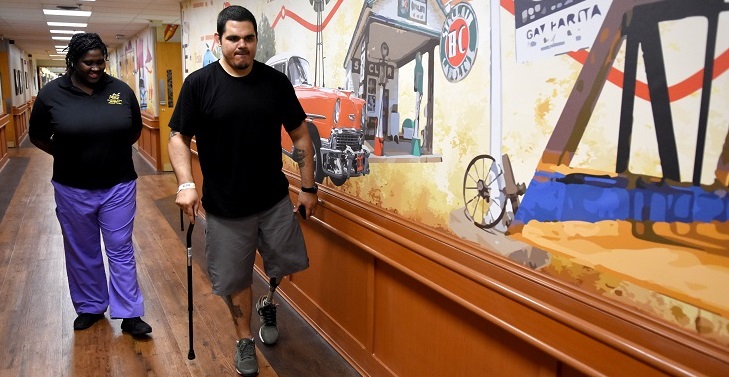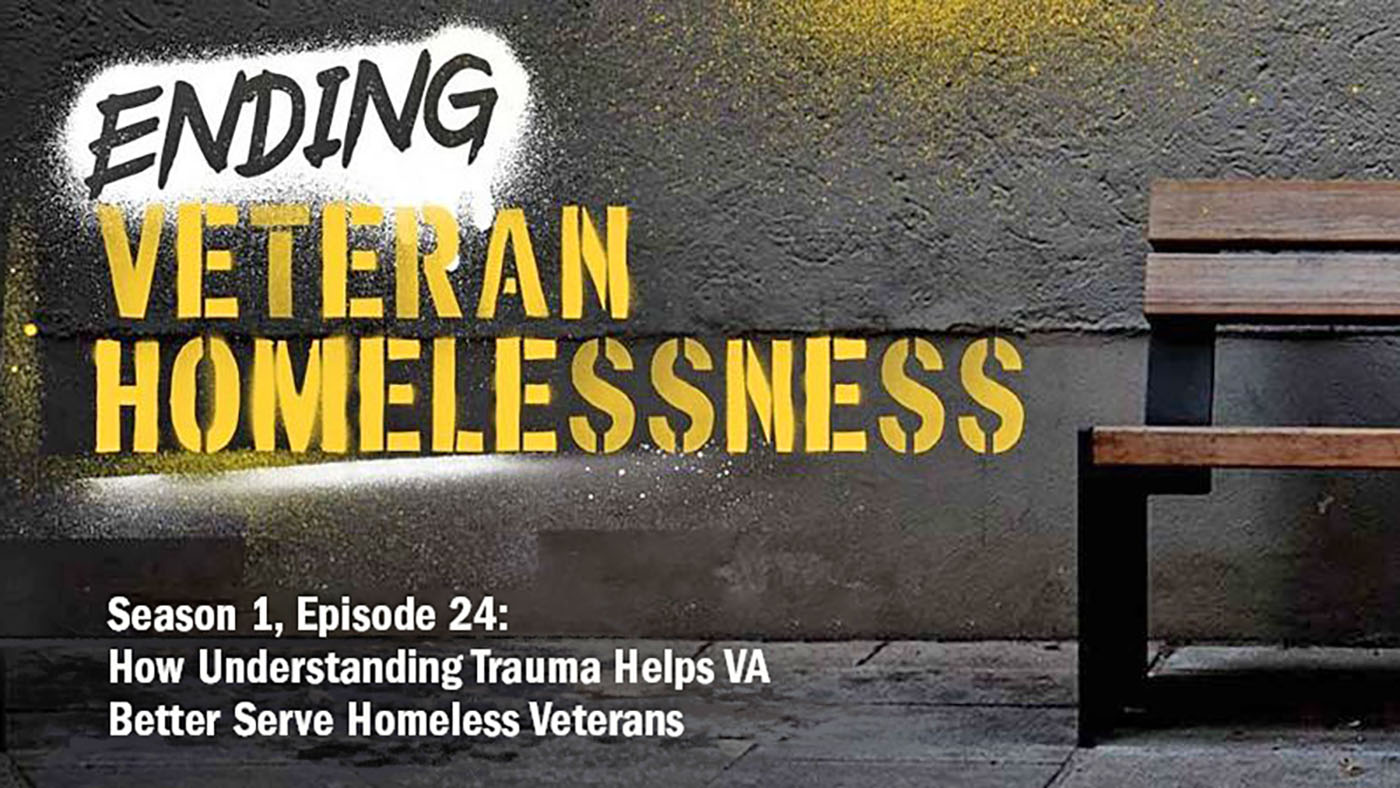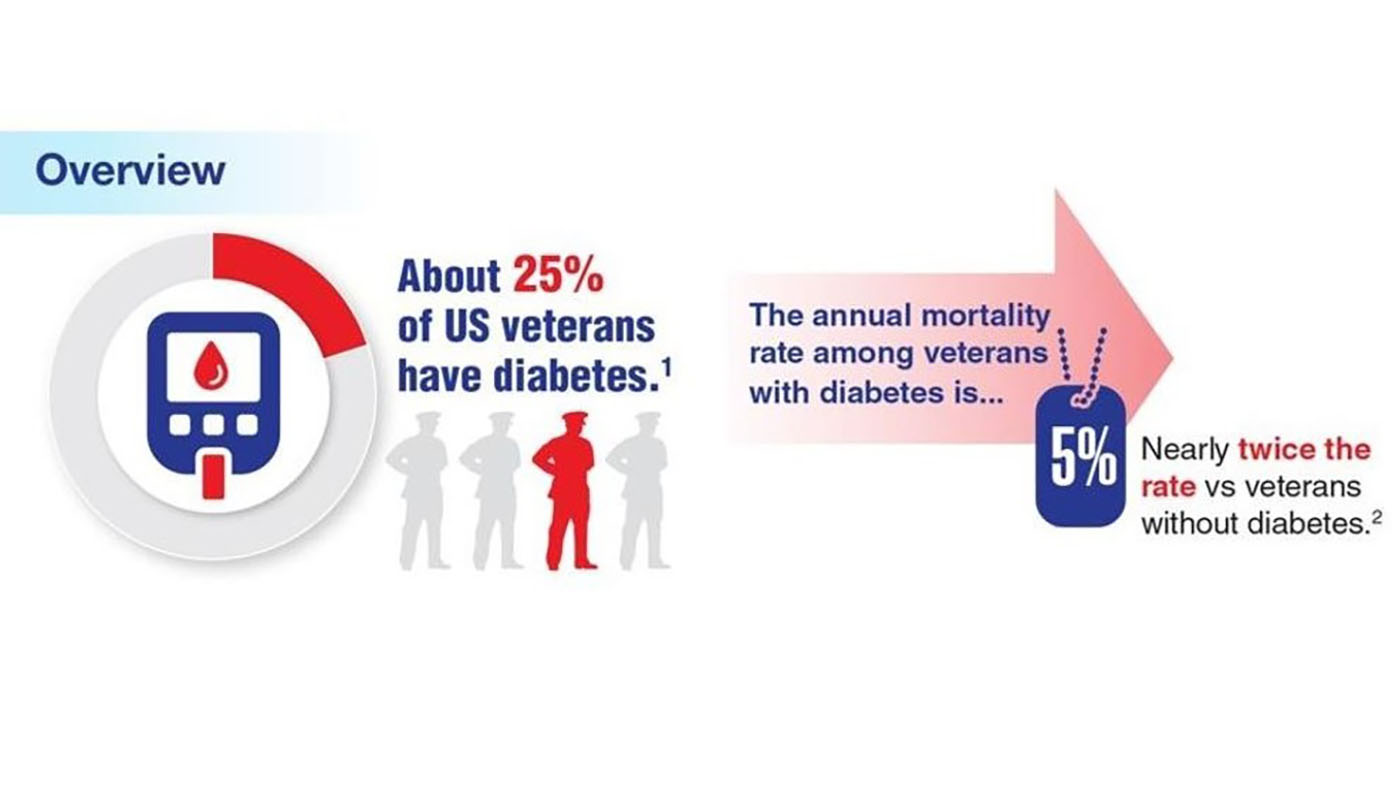Kahron Gibson felt the left side of her body go numb.
This had happened to her before. She knew the signs and symptoms of a stroke because she had one in 2000. The U.S. Army Veteran drove herself to the emergency department of Dallas VA Medical Center that day in November 2018, and her fear was confirmed—Gibson had suffered her second stroke.
Someone in the United States has a stroke every 40 seconds, with 185,000 strokes—nearly 1 of 4—in people who have had a previous stroke, like Gibson.
Unable to walk and paralyzed on the left side of her body, Gibson was still in the hospital when she was referred by her physician to VA North Texas’ Comprehensive Integrated Inpatient Rehabilitation Program (CIIRP), an intense rehabilitation program that specializes in the care of Veterans who have suffered a stroke.
“I couldn’t do anything. It was really rough,” said Gibson. “I could barely move my left hand, couldn’t put my shoes on, and I needed help getting dressed.”
Gibson had to qualify for CIIRP because of the intense therapy required. Participants must be medically stable and able to participate in three hours of therapy a day to get into the program.
“We are one of only a few accredited Commission on Accreditation of Rehabilitation Facilities (CARF) inpatient facilities in the Dallas, Fort Worth area,” said Debbie Brim, CIIRP Rehab Coordinator. “The program has been very successful and the gains the Veterans make are phenomenal.”
CIIRP addresses physical, psychological and medical problems to maximize each patient’s specific needs and quality of life with their team of physicians, physician’s assistants, rehabilitation coordinator, physical therapists, occupational therapists, recreation therapists, psychologists, chaplain and a dietitian.

Army Veteran Charles Jones climbs up a ladder with his new prosthetic leg doing return to work activities while in the Amputation Specialty Program (ASP), an intense rehabilitation program requiring three hours of therapy a day.
“I am very independent, and then all of a sudden I had to depend on others to help me,” said Gibson. “The first week in CIIRP I was really enthused and ready to go, but I did have some tears. It was very hard, but I always had a goal–to walk again.”
And walking is what she is now doing. Five months after checking out of CIIRP, Gibson can now walk with some assistance, and her next goal is to walk without a cane.
“Ms. Gibson was incredibly motivated and worked really hard, and it showed,” said Brim.
“We knew she was going to have a good outcome because she was so motivated to her recovery.”
On average, 80 Veterans a year are admitted into CIIRP at VA North Texas. CIIRP also specializes in services to patients who had amputations, fractures, joint replacement, weakness after surgery and heart attacks. The Amputation Specialty Program (ASP), under the CIIRP program, is designed for the unique needs of Veterans. Stroke and amputation are the two largest populations that go through CIIRP.
U.S. Army Veteran Charles Jones is an above the knee amputee and the most recent patient in ASP. He is learning how to walk with a new prosthetic leg.
“It feels great walking, I’m really excited and ready to move forward,” said Jones. “The number one thing I’m looking forward to is going outside with my daughter to play with her.”
The staff works with amputee patients in pre- and post-prosthetic phases of rehabilitation. The average stay for an amputee is seven to ten days.
“He is getting to take his new skills learned in these sessions and apply them into physical, emotional, occupational, social and leisure interests that he can participate in at home and community,” said Brim.
For CIIRP patients like Charles Jones, a little humor goes well with the sweat and tears associated with their recovery from strokes, amputations and other life-altering medical conditions.
“I’m here trying to make each step count,” said Jones. “I’m looking forward to being the tallest person in the house again.”
About the author: Jennifer Roy is a public affairs specialist with VA North Texas Health Care System.
Topics in this story
More Stories
Discover the power of your breath! Explore how mindful breathing can bring peace, ease your mind and enhance clarity in this week's #LiveWholeHealth video.
A unique program at Boston VA uses the principles of trauma-informed care to serve homeless Veterans with empathy and understanding.
Diabetes is a complex metabolic disorder with serious consequences if not managed properly. VA can help.







My life partner had a stroke in 2017 he is a Veteran. We went through rehabilitation for a year because that is how long Medicare would pay. He is paralyzed on his right side and he has a speech problem. I have been taking care of him. He can stand and walk with help from a handrail. My question is I have been working with his doctor in trying to get a brace for his leg and arm but Medicare has not approved it yet. I feel with a good brace he will be walking with a cane. What can I do to get him into the VA program.